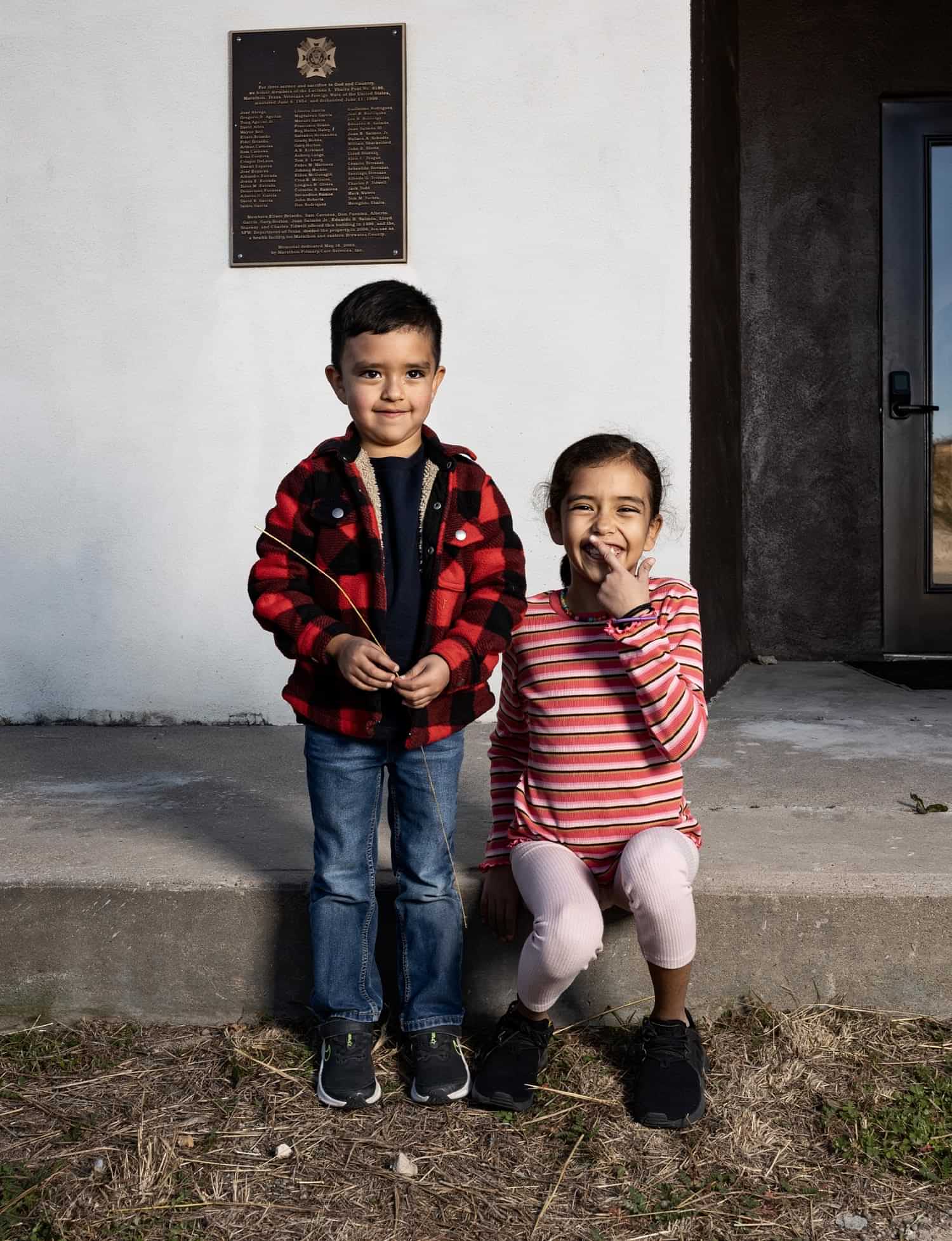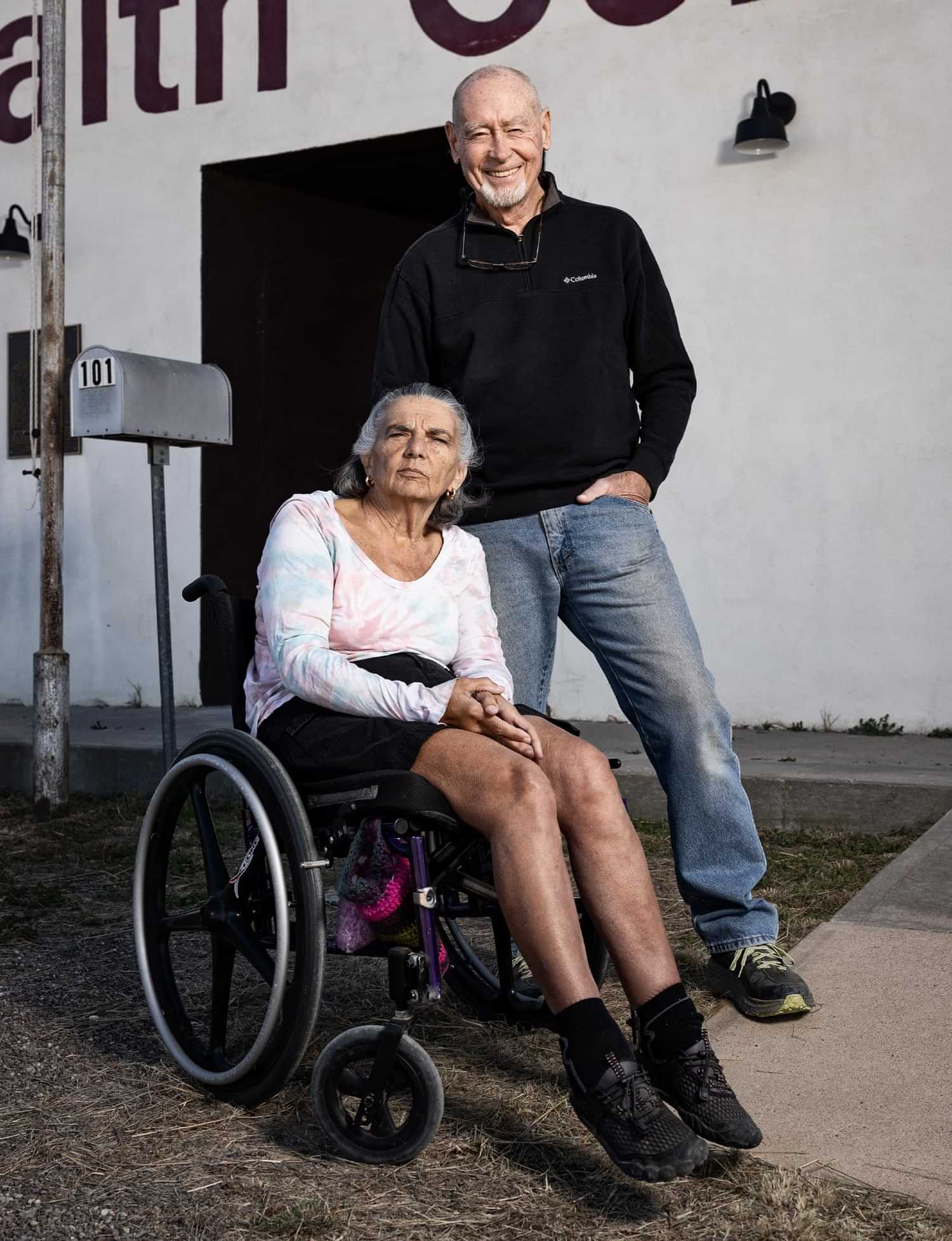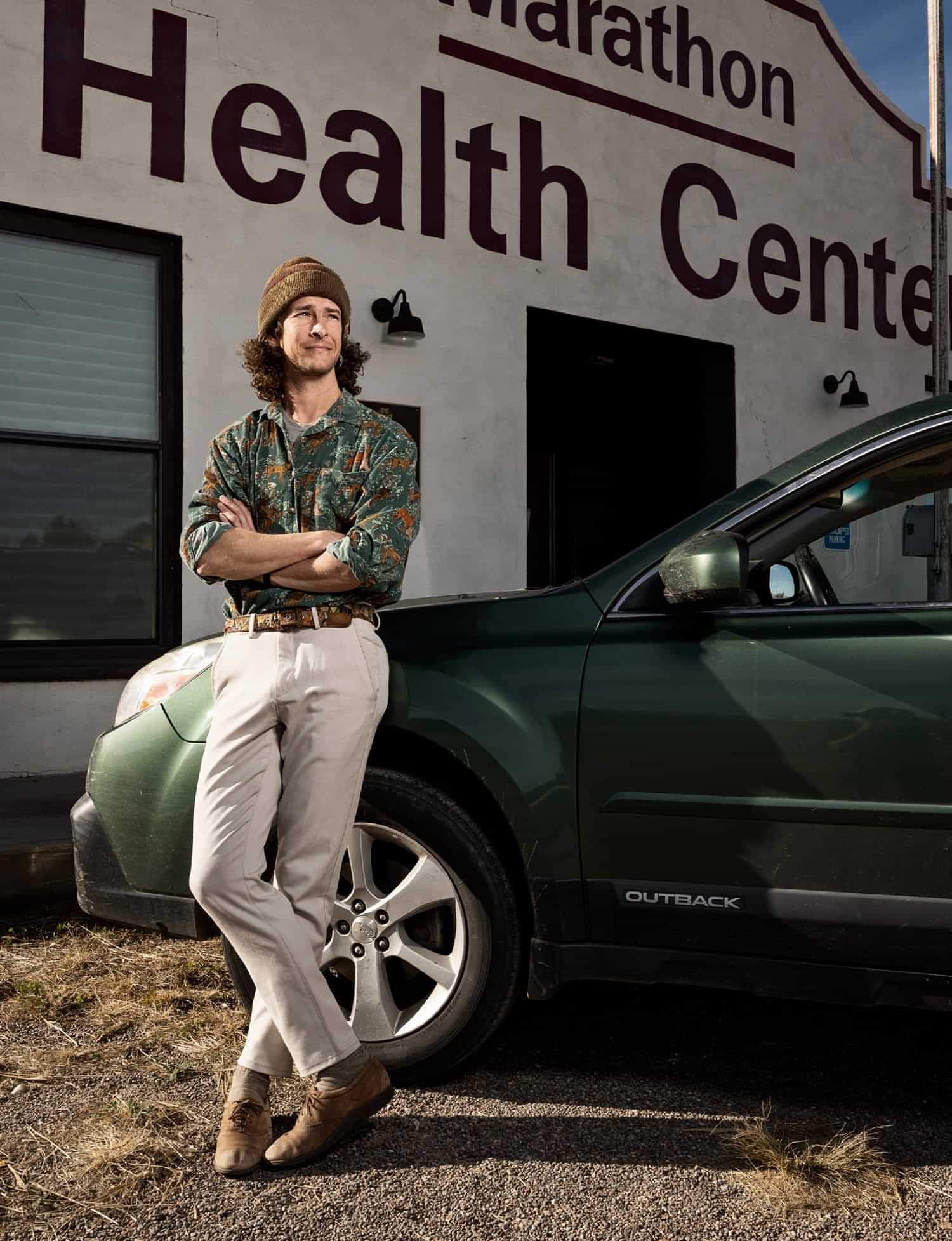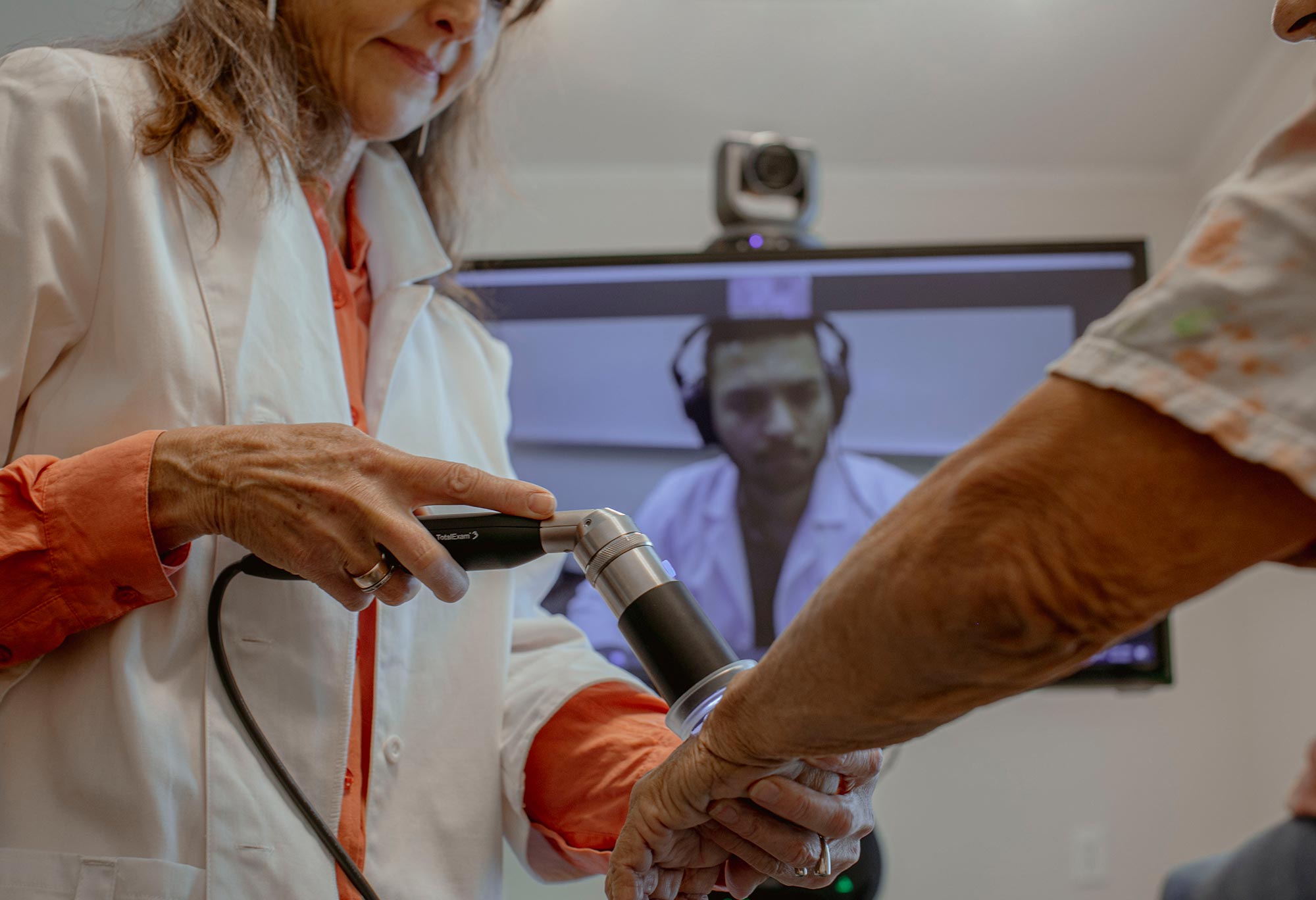
Rural Risk Factor
Rural communities are asking for help in a state built on its industrial and agricultural way of life.

Eliya and Elias Hernandez – the future of rural communities.

Eliya and Elias Hernandez – the future of rural communities.
risis. A word that has described rural health care since at least the 1980’s.
Defined as a time of intense difficulty, trouble or danger, a crisis in rural health care impacts 3.1 million people in 172 of Texas’ 254 counties.
In the last 40 years, rural Texas hospitals have become crisis casualties. In the 1960s, Texas had 300; today, there are 158. In the last decade, Texas has led the nation in closures — 26 hospitals have closed in 22 communities since 2010.
But “(the crisis) is not going to end when we say it’s going to end; it’s going to end when the rural community says it going to,” Adrian Billings, MD, PhD, chief medical officer of Preventative Care Health Services, a federally qualified health center in Marfa, Presidio and Alpine, Texas, and associate professor for the School of Medicine at the Permian Basin, says.
One community of 365 people – Marathon, Texas, – is not going down without a fight.
“There are still people out here, and we still need good doctors, and we need a system for health (care). A good system,” Ray Santos, a Marathon resident for 24 years, says.
It’s a thought his wife, Hilde Santos, echoes. “I really (worry) about our health care because there is nothing, nothing close, and doctors come and go.”
“They change like I change socks,” Ray Santos says.
“If we want to improve, we have to go through some kind of change,” Ivonne Durant, Ed.D, Marathon ISD superintendent, says.
Their pleads echo across the state. How will we respond?
Jody and Bob Freeman experience barriers to care.

Jody and Bob Freeman experience barriers to care.

associate professor for the School of Medicine at the Permian Basin
Get the facts straight
Jody and Bob Freeman, long-time Marathon residents, share the story of their grandson who begged them to never sell their house in this small community because he’s never seen stars before like he can see there. His ritual of sitting in the front yard at 2 in the morning, leaves him in awe — out here, the stars have room to shine.
Ray Santos describes this life as “heaven,” followed by a series of questions: “Where else can you sleep with the screen doors open, leave your car unlocked, and get up in the morning and hear nature?”
And there’s more.
“They have a saying here, ‘Big Bend is a great place to retire to and awful to grow old in’ because of health care,” Marci Roberts, director of the Marathon Health Center, says.
It’s a saying that could translate to other rural communities in Texas as the state earned an F for its fifth year in a row on rural access to care, according to the Rural Health Quarterly report card, a publication of TTUHSC’S F. Marie Hall Institute for Rural and Community Health.
The challenges rural Texans face is a 15.8% poverty rate compared to a 13.2% urban poverty rate. A 6% unemployment rate compared to 5.6% in urban areas. As of 2019, 22% of rural Texans have no health insurance, and the state has the highest uninsured rate in the U.S., according to the U.S. Census Bureau. All of which point to social indicators of health.
Also reported is an age-adjusted mortality rate in Texas rural areas that is 18.8% higher than the urban rate. The Texas Almanac notes the population loss increased from 79 to 94 Texas counties in 2010-2018 from the previous decade. Most of these counties are in the Rolling Plains and Panhandle regions, distal from larger urban conglomerations.
Health care is a struggle for most rural Texans; and that’s just not right.
“Health care in our country, in our state, should be a right and not a privilege, and for rural residents, it truly is a privilege,” Billings said.
Director of the Marathon Health Center

Time for a Different Lens
As Ruben Ortega of Marathon puts it, to make a dent in solving the issues that rural Texans face with health care, “change is inevitable … you have to start somewhere and keep going.”
After multiple failed attempts at a clinic and hospital partnerships, Roberts took a 283-mile round trip to Odessa knocking on hospital doors begging for an out-of-the-box solution to Marathon’s health care needs. She was referred to Tim Benton, MD, regional dean for the School of Medicine at the Permian Basin, and discovered a partner and checked-off her last “to-do” in her community — find a sustainable form of health care through telemedicine.
Marathon residents Steve and Arlene Griffis say, it’s “the future of rural communities.” And now, it’s their reality.
It’s not what you think
The misconceptions that surround telemedicine go beyond the myth of it being more expensive, Santos says. There is a lack of trust around conducting your medical business online, which he understands but prompts a question in response. “When was the last time you physically went to the bank?” According to Forbes, 78% of Americans prefer to do their banking digitally via mobile banking or bank website. “So, if you’re confident enough to handle your money using virtual services, I think it’s kind of equivalent,” Santos says.
Santos also debunks the myth that telemedicine can only be done in certain cases. That’s not completely true. With the technological advancements that can accompany it via specific tools, even a physical exam can be conducted. Almost all specialties can be delivered, if we are creative, Santos says.
Lastly, although different from a traditional clinical exam, telemedicine is not just a Zoom call.
There are a lot of studies that say the quality of care given in the brick-and-mortar of a doctor’s office is equivalent to telemedicine with patient and provider approval rates similar, Santos says.
Telemedicine is also beneficial from a provider’s stand point, he added. With a nurse and physician burnout rate of up to 54%, according to the U.S. Department of Health and Human Services, telemedicine can be a remedy for seeing more patients in less time.
To bring virtual specialties to rural communities efficiently, medical professionals need to be trained in this type of care. Telemedicine needs to be integrated in our academic systems as part of our practice, Santos says. As the world moves forward, so does health care, and telemedicine is where Santos thinks it’s going.
The importance of rural training
Although, Billings longs for his students to become rural physicians, he recognizes that isn’t everyone’s path. Still, he wants them to be prepared if someone like him calls at 2 in the morning with a critically ill patient. Training in rural areas will give “a much better understanding of the limitations of knowledge (and) the limitations of health care resources to care for that critically ill patient.”
Without this training, a medical professional in an urban area may struggle to put themselves in the shoes of a physician in a rural community with their unique challenges.


Instances like this are why Billings believes all medical students should have rural health training, whether they’re planning to provide care in an urban or rural area.

The Benefits to Working in Rural Health Care
Rural health care is an area of the medical field that takes an independent person, Bass says.
Medical professionals are hard workers. It’s an attribute Bass recognizes as the foundation needed for those who want to serve rural communities because of the health care shortage that leaves you on call 24/7.
There’s something that rural health care can offer that a lot of organized systems in urban areas can’t – freedom, Bass says. Without the overhead of a large hospital system, a medical professional in a rural area has the freedom to decide how to run the practice. Leaving room for a type of care that Bass defines as the most rewarding, and one in which she thrived – delivering what she calls some of her best care.
Billings says rural health care provides an amazing opportunity to have a more robust relationship and not be anonymous, going beyond the exam room, describing it as being “somewhere between a patient and a family member.”
When Bass worked as a rural physician in Littlefield, Texas, she reiterates Billings’ thoughts stating “There’s a sense of pride to belonging in the community with them.”
It’s the reason why Billings, Texas Academy of Family Physicians’ Family Physician of the Year, calls himself a “community physician” although his specialty is family medicine. The residents whom Billings trains have been shocked by this feeling. Sharing a common answer in exit interviews when asked the best thing about their training are the relationships they were able to build with their patients.
How we can help
In addition to the training of urban and rural health care professionals, communities can support health care pipelines beginning with local students.
Most of these rural students are diverse, often involved in multiple activities at once such as UIL, playing sports and playing in the band. So, we need to not only look at these students by their SAT and MCAT scores but also at how well-rounded they are, Billings says.
“That is what we want in health care. That is what we want in a civic leader,” he says. “These are the ones who have roots in rural communities and are most likely to return to either their own communities or similar rural communities in Texas.”
There’s a term that Billings coins from Paul Farmer, MD, PhD, a medical anthropologist and physician that Billings never met but calls his mentor from afar – accompaniment. Don’t come in the community as an expert trying to tell these rural communities what they must do.
“You really have to show up and accompany these rural communities and say, ‘This is who we are.’ Create trust, friendships,” Billings says.
Start with a question by asking them what they need as individuals and communities. It’s important to immerse yourself in the communities, “look them in the eyes and shake their hands,” Billings says.
For long-time Marathon residents Jody and Bob Freeman, they’re “excited to have (a telemedicine) facility (locally) because it’s 30 miles to the closest doctor just for a routine check-up.” A check-up that they almost can’t get unless they’re willing to wait, sometimes 30 days or more.
As a society, we have to agree on a basic foundation of care that will be available to all, and “if it cannot be in person, we (should) enable a telemedicine presence in these rural communities,” Billings says.
It can be an all-around good alternative to what we’ve called a crisis for too long – rural health care. “We have to embrace telemedicine and give it a chance,” Santos says. There’s no harm in trying when the system is already challenged.
Because “a rural zip code (shouldn’t be) a risk factor for a patient’s health,” Billings says.
TTUHSC’S Legislative Initiative
Since 1987, TTUHSC has been providing telehealth to people living in the predominantly rural West Texas area. With 35 years of service in this region, the university is proposing to the 88th Texas Legislature an opportunity to build on their experience and existing telehealth platforms through the creation of an Institute for Telehealth Technology and Innovation.
Focusing on three existing pillars, the institute will further TTUHSC’s initiatives in health care delivery, with a focus on rural communities: 1) increase access to care by collaborating with hospital partners in TTUHSC’s service area to expand specialty care and chronic disease management; 2) strengthen research and establish a way to analyze, examine clinical efficacy and health care outcomes; and 3) train future health care workers on telehealth best-practices using biotechnology in the delivery of care.
TTUHSC is moving toward establishing the institute with a recent one-time federal award of $2.6 million in the FY 23 Omnibus Appropriations Bill – led by efforts from U.S. Rep. August Pfluger – to purchase equipment for TTUHSC’s telehealth hub at the Permian Basin campus. Equipment includes electronic health monitoring modules and computer hardware for a school-based module to utilize telehealth with TTUHSC’s partnerships of Ector County Independent School District and Medical Center Hospital while also providing health care access to 19 rural-based school districts in the Midland and Odessa area.
The university’s state request of $6.75 million per year, if approved by the Legislature, is part of TTUHSC’s non-formula base funding in the state budget.